by T. Sabaratnam, September 10, 2004
Chapter 14
Original index to series
Original Chapter 15
The Chunnakam Massacre
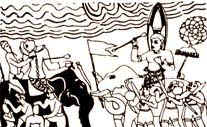
Dutugemunu killing the Tamil monarch Elara in Mahavamsa epic
Trade and Shipping Minister Lalith Athulathmudali was appointed Minister of National Security and Deputy Defence Minister on 23 March 1984. An Oxford educated lawyer-politician with an unbridled ambition to succeed Jayewardene as the president of Sri Lanka, Athulathmudali took the appointment as the gateway to realize his desire. He plunged into the task of destroying the Tamil armed struggle with enthusiasm and demonstrated to the Sinhala masses that he was the real reincarnate of Dutugemunu, the ancient Sinhala King who defeated the Tamil monarch Elara and reinstated the Sinhala dominance.
Sinhala politics of the 1980s should be understood to place the anti-Tamil activities of the Jayewardene regime in the correct context and perspective. Athulathmudali, Mahaweli and Lands Minister Gamini Dissanayake and Ranasinghe Premadasa were competing to succeed Jayewardene, whose second six-year term of office would end in 1988. They were competing to present themselves as the best Sinhala nationalist leader.
Gamini Dissanayake had already chosen his role as the minister who implemented Jayewardene’s third policy track of destroying the basis for Tamil Eelam, the claim for a Tamil homeland. Premadasa had taken upon himself the role of denying the Tamil demand for an autonomous federal region. Athulathmudali had now received the opening to present himself before the Sinhala electorate as the leader who destroyed the Tamil freedom struggle, which he and Jayewardene called Tamil terrorism.
Athulathmudali got into the act soon after being appointed. He summoned a top level conference of service and police chiefs soon after he took over the new posts at the Defence Ministry. He invited me to cover the function and the conference. He announced at the conclusion of the conference, “Tomorrow we are going to Jaffna. President Jayewardene had given me two specific tasks. The first task is to defeat terrorism. The second is to transform the ceremonial military into a fighting force. We cannot fulfill those tasks sitting here in Colombo. We will go to the scene of the battle. Tomorrow morning we will be working out our strategy to defeat terrorism from Jaffna.”
I decided to opt out of the press corps that accompanied Athulathmudali to Jaffna. I told him that the usual defence reporter would fly with him to Jaffna. I told him that I would continue to cover his trade and shipping ministry and the All Party Conference (APC), which had been sitting at the BMICH since January 1984. I told him that, being a Tamil, I would be looked at with suspicion by the military and that, being a Jaffna man, I would face the risk of death. He readily accepted my reservations. He said, “Saba. You are right.” My respect for him grew.
Jayewardene appointed General Sepala Attygala as defence secretary and his son Ravi Jayewardene as national security advisor.
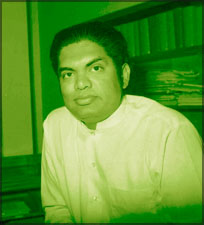
Lalith Athulathmudali
Athulathmudali flew to Jaffna in the morning of 24 March 1984. Attygala, Ravi Jayewardene, commanders of the army, navy and airforce and the Inspector General of Police went with him. Senior army and police officers deployed in the Jaffna district attended the conference. Half an hour after the conference started Jaffna’s Police Superintendent whispered to the IGP that a sergeant and two police constables had been killed in Point Pedro. The IGP passed the message to Athulathmudali, who was visibly shocked.
The LTTE had carefully planned this attack. It was intended to give a message to Athulathmudali. A group of LTTE hit-men waylaid and attacked a police patrol in Point Pedro. A sergeant and two police constables were killed in the spot and two other constables and the driver were injured. T he attackers fled with the weapons of the policemen.
Two days later, on 26 March, gunmen shot and killed a member of the airforce in Chunnakam. Airforce men avenged his death two days later, 28 March. They arrived at the Chunnakam market, the biggest vegetable market in the Jaffna peninsula, in a jeep and a truck and went to the Chunnakam police station. Then they went to the market packed with people as it was a market day. They then opened fire on the civilians in the Chunnakam market square.
Nine persons died and over 50 were injured and Subramaniam, known as Maniam, the market keeper, collapsed and died of a heart attack in the market square.
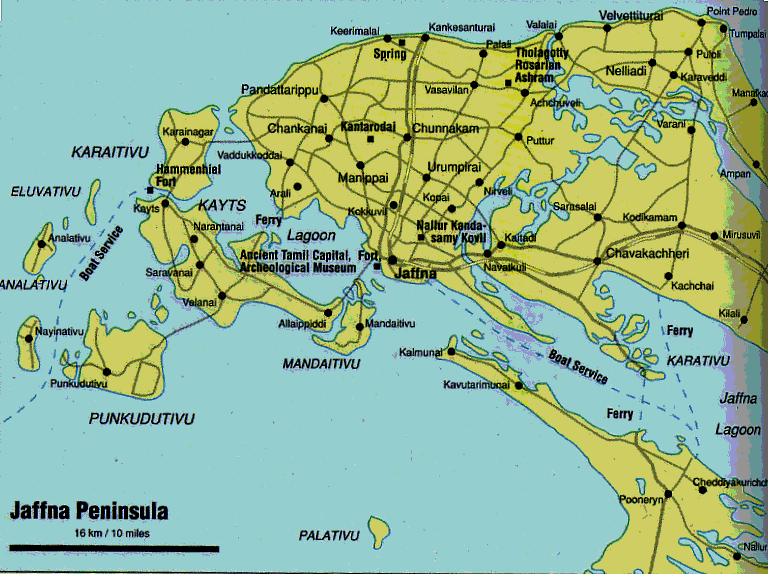
Jaffna peninsula with islands
The LTTE and other armed groups were now ready to attack the Sri Lankan security forces. The LTTE decided to punish the security forces for the Chunnakam massacre. They decided to ambush the platoon of soldiers who belonged to the newly-formed Gajaba Regiment which provided guard to the trains plying between Colombo and Jaffna. The soldiers who provide guard to the Yal Devi express train disembark at Jaffna station and travel in a convoy of vehicles to Palaly Camp. Yarl Devi reaches Jaffna at around 9.30 p.m. The convoy, led by a five-ton Bedford truck, went along Hospital Road to the town and then proceeded to Palaly.
Car Bomb Attack
On 9 April the train was slightly late and the convoy of three vehicles left the station at about 9.45 p.m. As it was traveling along Hospital Road, a booby-trapped car parked near the historic Adaikala Matha Church exploded throwing the massive truck twenty meters away. The truck fell into the drain. Thick branches of a shade tree that stood about 70 feet away were shaved off at various places. Leaves on some branches were roasted. Over ten soldiers who travelled in the truck died. It took several minutes for the soldiers in the other vehicles to recover,
The 9 April explosion was the LTTE’s and Sri Lanka’s first car bomb explosion. Before that car bombs had been used by the IRA and Palestinian guerillas.
The army retaliated. Soldiers set fire to the shops and houses in the vicinity. They shot and killed the people who tried to escape. Two armoured cars stationed at the Buddhist temple, Naga Vihara, rushed to the scene of the ambush and fired several rounds with the 7.27 guns at the church, damaging the building and the statue of Jesus Christ.
The Catholics were enraged. On 10 April morning the entire Catholic coastal belt rose in protest. A group of civilians first marched around 8 a.m. to the Sinhala Vidyalayam which the army used as a resting place and burnt the buildings. Another mob vented its anger at the Buddhist Naga Vihara at Stanley Road around 8.30 a.m. Eye witnesses told me that the people were so worked up that they marched to the Vihara with crow bars and iron rods and demolished the building to the ground. Many used their bare hands to pull down the buildings.
Two weeks after that incident I met the chief priest of the vihara in Colombo. He showed me an album of photographs which showed a mound of rubble. He blamed the LTTE for the destruction.
Eight armed youths entered the Jaffna branch of the Bank of Ceylon when it opened the door at 9 a.m. and robbed 1.2 million rupees in cash. They escaped in the bank manager’s car.
The government declared an 18-hour curfew at 12 noon on 10 April in the Jaffna district. A large contingent of soldiers was brought to the Jaffna town that night. They burnt down the Jaffna Cooperative Stores and the adjacent buildings. They fired at civilians, killing many.
Soldiers tried to march towards Gurunagar, the densely populated Catholic village to the southeast of Jaffna city. The residents, led by Catholic priests, put up road blocks. They parked vehicles across the road. They burnt used tyres and logs of wood. The LTTE took a lead in mobilizing the people. Kittu and other LTTE cadres were there distributing grenades and petrol bombs.
The LTTE and other militant groups succeeded in restricting the movement of the soldiers. The army and the Colombo press were upset over this development. An army officer described to the Daily News this new phenomenon thus: “The terrorists employed new tactics, not encountered previously, to prevent the free movement of army patrols.”
An Information Department publication Mission of Violence has this: “On the night of April 10, army patrols encountered road blocks, burning tyres were thrown on the road and at several points, were ambushed by armed youths, who used their firepower with the assurance of professional soldiers.”

Dr. Devanesan Nesiah 2016
Jaffna Government Agent Devanesan Nesiah said the military killed more than 50 civilians. The Jaffna Citizen Committee claimed that the number killed by the army was 234 civilians in the four days beginning 9 April. State Ministry secretary Douglas told the weekly press briefing, “I cannot say every single person killed was a terrorist. When soldiers are ambushed or come under attack they fire in all directions. What else can they do? After all how does one identify a terrorist?”
On the same night a group of armed LTTE cadres exhibited the high degree of professionalism they had achieved. At 8.15 they walked into the Point Pedro police station, firing automatic weapons as they entered. The policemen threw away their old shotguns and fled. The Tigers used powerful explosives and blasted the buildings and burnt the two jeeps parked in front and walked away taking with a walkie-talkie set.
The August 9 ambush gave a new dimension to the armed struggle. The LTTE made use of the car bomb for the first time. It mobilized the people against the army. It successfully restricted the army’s movement. And, above all, the ambush signified the intensification and sophistication of the armed struggle.
Athulathmudali reacted with anger. He had been aware of India’s training program since December 1983. The first ten days of April 1984 had demonstrated the high level of efficiency the armed groups, especially the Tigers, had achieved. The security council meeting he presided over on 11 April considered ways and means of curtailing the movement of the militants across the Palk Straits. The result was the creation of a maritime restricted zone, also known as a surveillance zone, inside Sri Lanka’s territorial waters.
Athulathmudali told the press that evening that no ship or boat would be allowed to be inside the maritime restricted zone without the permission of the Navy Commander. The boats that travelled with permission would be escorted by a navy patrol craft. He said the restriction was imposed to prevent smuggling of narcotics and to prevent the movement of terrorists between Sri Lanka and India.
Foreign Mercenaries
Athulathmudali was questioned at that press briefing about the induction of the Israeli Internal Security Agency Shin Bet into Sri Lanka. He admitted that Shin Bet was involved in the training of the Sri Lankan armed forces. He said many Israeli officers were involved in the training of the Sri Lankan soldiers in Colombo.
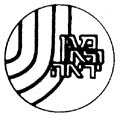
Shin Bet
His admission was carefully structured in the form of a question. He said, “Is it wrong to get our soldiers trained when terrorists are being trained? The events of the last few days have proved beyond any shred of doubt that terrorists are given professional training in guerrilla warfare.”
The Sri Lankan government also hired in the next few months Keeny Meeny Services, a Channel Island-based British mercenary company, to train the Sri Lankan Special Task Force (STF), an elite police commando unit set up under the command of Ravi Jayewardene. The former British Special Air Services personnel provided by the company trained STF personal in counterinsurgency methods. British mercenaries and British pilots of this company also took part in combat.
The British pilots piloted helicopter gunship and combat aircraft. They took part in bombing raids in the Jaffna Peninsula. These British mercenaries were paid a monthly salary of around 2,500 British pounds per person. They operated in Sri Lanka with the tacit approval of Margaret Thatcher’s government. British weapon manufacturers sold huge quantity of armaments to Sri Lanka in April, 1984. Twenty armoured vehicles, a large quantity of night vision equipment, SLGs, LMGs, etc. were bought.
Pakistan also provided training and weapons to Sri Lanka, especially during President Zia Ul-Haq’s period. Reports said that more than 8,000 Sri Lankan troops were trained in counterinsurgency. Pakistani-trained men wore black shirts and were responsible for indiscriminate killings.
Athulathmudali, while engaged in upgrading the quality of the army, was also busy in raising its numerical strength. When he took charge in March 1984 the strength of the army was about 15,000 with 11,000 regulars and 4000 volunteers. He launched a rapid recruitment drive by lowering the educational and physical requirements of enlistees.
A week after the imposition of the maritime restricted zone a naval patrol craft detained a boat which refused to stop when asked to do so. The boat, fitted with two 25 horse power engines, was taking fresh recruits for training in Tamil Nadu. Thirteen were arrested and investigators found among them a young boy aged 16. Athulathmudali flew to Palaly to question him. The boy said he was forcibly being taken to India for training. He added that he had agreed to go with the three hardcore terrorists because they threatened to kill his parents. For Athulathmudali the boy was a propaganda treasure.

On 1 May 1984 gunmen shot a Tamil police constable in Kalmunai town, thus restarting the militant campaign to eliminate Tamil informers and Tamil police investigators. He was the first policeman to die in the eastern province. Next day, 2 May, police constable Navaratnam was gunned down at the Point Pedro bus stand. Navaratnam, a member of the elite Special Unit established to arrest militants was about to board a bus to Jaffna. Two youths who rode on bicycles shot him and escaped. Two days later, 4 May, Police Constable Subramaniam, another police investigator of the Special Unit, was gunned down at Meesalai in the Chavakachcheri area. The LTTE killed him for providing the Military Intelligence Unit stationed in the Gurunagar Army Camp information about the hideout of Seelan who died on 15 June, 1983.
The escalation of the clash between the army and the militants also resulted in another undesired result which helped the militants to consolidate their position among the people. The army took control of the civil administration of the Jaffna peninsula, gradually pushing the civilian administration to the background. Palaly and Elephant Pass military camps emerged as the new power centres. The commanders of these camps dictated policy and regulated administrative functions, providing primacy to military interests.
The overlord attitude of the military commanders antagonized civilian administrators. The situation in which better-educated civil servants had to take orders from low-placed military officers created a group of time-servers who were waiting to undermine the military. This process heightened the Sinhala-Tamil estrangement.
Allen Episode
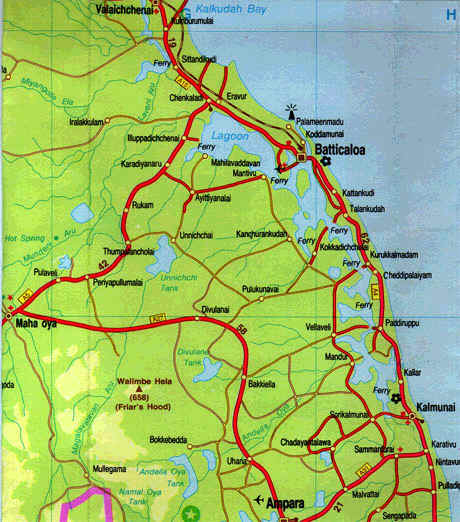
The induction of Israeli intelligence agents and military trainers and the increasing role the US played in assisting the Jayewardene government generated among the Tamil people intense suspicion and hatred to America and its external intelligence agency, the CIA. Militant groups were highly critical of US-funded development projects and the Americans working in them. They branded all US workers as CIA agents.
An American firm, Ruhling Company of Ohio, was involved in a water supply project in Point Pedro and Chavakachcheri. A young newly-married couple, Stanley Bryson Allen, 30, an engineer, and Mary Elizabeth Allen, 28, were working in that project from the latter part of 1983. They lived in a modern bungalow on Beach Road, Gurunagar.
The EPRLF intelligence unit Makkal Ayvup Pirivu’s (MAP) was suspicious about them. They spied on the Allens and informed the EPRLF leaders residing in Chennai that they were CIA agents. The leadership, comprised of Pathmanabha, Douglas Devananda, Suresh Premachandran, Mani and Ramesh among others, hatched a plan to win their organization international attention. The plan was to kidnap the Allen couple and demand a huge ransom and the release of their cadres from prison in return for their release.
The EPRLF”s military wing, the People’s Liberation Army (PLA), was given the task of executing the scheme. PLA commander Douglas Devananda ordered his cadres in Jaffna to do the job. The Jaffna branch did a thorough work. They sent a group of youngsters around 7 p.m. on 10 May to determine whether the couple was alone. The youngsters told the Allens that they were collecting money for the library. Stanley indicated his willingness to contribute and asked them to come the next day.
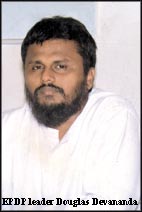 Two hours later, after the young couple retired to bed, a group of armed five men – Rex, Mohan, Kumar, Indran and Rogan – entered the house through the back door while the two servants were having dinner. They pushed the servants into a room and locked them up. They warned the servants not to shout or try to get out and were told to inform the police the next morning. Then they knocked at the bedroom door. Stanley opened it. Mary stood behind him. The PLA cadres pulled out their guns and told the Allens to get dressed up. They then bound, gagged and blindfolded the Allens.
Two hours later, after the young couple retired to bed, a group of armed five men – Rex, Mohan, Kumar, Indran and Rogan – entered the house through the back door while the two servants were having dinner. They pushed the servants into a room and locked them up. They warned the servants not to shout or try to get out and were told to inform the police the next morning. Then they knocked at the bedroom door. Stanley opened it. Mary stood behind him. The PLA cadres pulled out their guns and told the Allens to get dressed up. They then bound, gagged and blindfolded the Allens.
The couple were led through the front door to the waiting double cab and pushed into the back seat. They were taken to a hideout.
I was asked to handle the story at the Daily News. Lake House had a group of efficient reporters and photographers in Jaffna. They were not proficient in the English language. We had developed an arrangement by which they telephoned the urgent stories to me and I wrote them up. I would also weave into the text the information I gathered in Colombo.
The Allens were kidnapped on 10 May, a Thursday. At 9 a.m. on Friday, May 11, a young boy went to the Government Agent’s Public Relations Officer at the Jaffna Kachcheri and handed him an envelope. It was marked ‘Very Urgent.” Government Agent Devanesan Nesiah found in it a copy of a letter addressed to President Jayewardene.
The letter gave three messages. First, it said People’s Liberation Army had kidnapped the American couple. It said they were kidnapped because they were CIA agents. Second, it laid down two conditions for their release. The first condition was that the twenty freedom fighters who were in government custody should be released. It listed the names of the twenty persons. The first name was that of Fr. Singarayar. The second name was Nirmala Nithiyananthan. The rest were EPRLF activists mostly from the Batticaloa district. The second condition was the payment of 50 million rupees worth of gold.
The third message was about the fate of the Allens if the Sri Lankan government failed to meet in totality of the conditions. It said, if the two conditions were not met within 72 hours commencing from 12 noon on Friday, the Allens would be killed one by one at the interval of six hours.
The most intriguing part of the conditions was the party to which the 20 detainees and the gold should be handed. The letter said they should be handed to the Tamil Nadu government, which would pass them on to the PLA.
The pick-up vehicle in which the American couple had been taken away was found abandoned at Senthankulam beach near Kankesanthurai, suggesting that the kidnapped persons had been taken to Tamil Nadu.
Linking the Tamil Nadu government in this matter annoyed Tamil Nadu Chief Minister M. G. Ramachandran and embarrassed India. The US was worried about the safety of its citizens and Jayewardene, Premadasa and Athulathmudali reveled on the situation. The US ambassador in Colombo met Athulathmudali and requested him to take action to safeguard the lives of the young couple. Athulathmudali told him that Sri Lanka vehemently condemned terrorism and the terrorist attack on innocent civilians. He assured that appropriate action would be taken to safeguard the lives of the two innocent victims.
Foreign Minister A. C. S. Hameed summoned Indian High Commissioner Chhatwal to his office and asked whether the Tamil Nadu government had any hand in the abductions. Chhatwal, a strong critic of the Jayewardene government, told me later that he felt like a sheep. He said he felt let down by the Tamil militants.
Hameed did not stop with cornering Chhatwal. He telephoned Indian Foreign Minister Narasimha Rao and asked for a clarification about the role Tamil Nadu played in the kidnap affair. Rao told him that the Tamil Nadu government had no hand in the kidnaping. Hameed asked Rao a very relevant question. “Do you say that the kidnappers asked Sri Lanka to hand over the prisoners and the money to the Tamil Nadu government without even mentioning the matter to someone in authority in Tamil Nadu?”
When told about this query MGR fumed. Muddalgal Muddalgal (meaning ‘Idiots, Idiots’) was MGR’s response. And MGR had helped EPRLF’s activists a week earlier when they were arrested for burning the American flag inside the American embassy premises in Chennai. EPRLF men wanted to do something dramatic to catch the eye of the international community. They went to the embassy in three auto- rickshaws. One of the activists- Ramesh- ran to the gate and pointed a camera at the guards. The guards ran away thinking it was a gun. The activists then pulled down the American flag and burnt it. They were arrested, but MGR ordered their release.
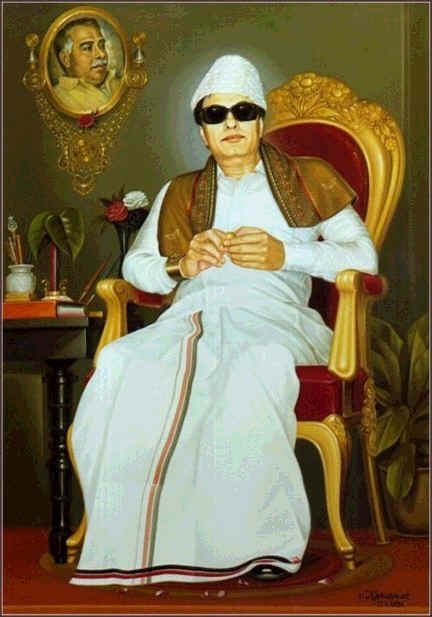 MGR issued a statement condemning the kidnapping and disclaiming any link with the kidnappers. He ordered the Tamil Nadu intelligence chief Mohandas to arrest EPRLF leaders. They were all arrested.
MGR issued a statement condemning the kidnapping and disclaiming any link with the kidnappers. He ordered the Tamil Nadu intelligence chief Mohandas to arrest EPRLF leaders. They were all arrested.
On that action-packed Friday Athulathmudali called a press conference at Colombo Municipal Club where he distributed the prizes after a netball competition. I covered the press briefing. Athulathmudali’s skillful performance at the press meet put to shame the thrilling netball final held just before. He opened the conference with the telling remark that his reaction to the Allen kidnap was “deafening silence.” Then he announced that watch centres had been set up in Colombo and Jaffna to monitor developments. He then advised the nationals of the US, UK, Canada, Scandinavian and European countries to leave the north.
“Tamil expatriates living in these countries are the ones funding Tamil terrorism here,” he said and added, “The very terrorist groups those expatriates are funding are kidnapping the nationals of their host countries.” He said Sri Lanka vehemently condemned the brutal kidnapping.
“The kidnap incident has proved beyond any doubt the two matters Sri Lanka had been telling repeatedly,” he said. “Firstly, the United States must help Sri Lanka to stamp out terrorism. Secondly, the Tamil Nadu government is fostering terrorism in Sri Lanka.”
India was embarrassed. US Vice President George Bush was to arrive on a state visit on Saturday, 12 May. The lives of two American citizens were in danger. Indira Gandhi took a personal interest in the matter. She telephoned and told MGR to tell the EPRLF that the Allens should not be harmed. The message was immediately passed on to Pathmanabha.
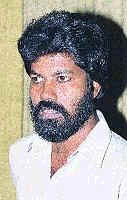
K. Pathmanabha
RAW swung into action. Its officers met Pathmanabha and told him that EPRLF leaders and cadres would be deported “lock stock and barrel” if the American couple were not released.
On Saturday, 12 May, the pressure on the EPRLF leaders was increased. The Chennai station of the All India Radio broadcast every half an hour an appeal by Indira Gandhi demanding the release of the American couple on humanitarian grounds. Later in the day an IB (Intelligence Bureau) official handed to Pathmanabha an unsigned typed message which read: “Release the Allen couple. I will provide all the help to you.”
Ramesh and Devananda told me many years later that Indira Gandhi’s note was the reason for their decision to release the Allen couple. Pathmanabha had met Indira Gandhi several times and had developed high respect for her.
The Allen couple was released late on Saturday night. They were taken to Jaffna’s Bishop House and released there. US embassy officials brought them to Colombo on Sunday and presented them to the media on Monday, May 14. The crowded press briefing was held at the USIS (United States Information Service) centre at Flower Road. I covered it.
Stanley spoke freely and answered the questions frankly. He said they were asked to lie face down in the pick up vehicle and were driven for half an hour. He said they realized later that they were driven round and round in the town to give them the impression that they were being taken to a distant place. “Actually, we were kept in a safe house very close to our house.” Stanley said.
Mary said they were treated with respect. “We were never harassed,” she said firmly to several questions by the Colombo press, which was hungry for an ill-treatment story.
Mary said they were told by the kidnappers that they were not terrorists. “We are freedom fighters fighting for the rights of the Tamil people. If we were terrorists we would have killed you and not treated you with respect,” they were told, she said.
The Allen episode ended happily. The couple left for United States. But it left Indo-Sri Lankan relations bitterly frayed.
Athulathmudali and Premadasa kept on attacking India, accusing it of arming, training, and harboring Tamil militants and of attempting to divide Sri Lanka. Premadasa’s charge that India was adopting double standards in the cases of Sikh separatism in Punjab and Tamil separatism in Sri Lanka hurt Indian feelings. He accused India of treating Sikh agitation as terrorism and the Tamil stir as a freedom struggle.
Premadasa told a public meeting, “India knows very well they are murders, kidnappers and looters…” to which India reacted with anger. “We are pained and surprised at these outbursts against a friendly country which has gone out of its way to offer friendship and goodwill to the government and people of Sri Lanka.”
Pilgrimage for Arms

Jayewardene presenting a baby elephant to American President Ronald Reagan 1984
Jayewardene commenced his pilgrimage for arms as the dust settled on the Allen affair. He went first to China and then to the United States. I n Beijing and Washington Jayewardene publicly and privately asked for military hardware. He built up his case for assistance saying Sri Lanka faced the threat of Indian invasion, India was arming the Tamils with the objective of dividing Sri Lanka and he needed arms and equipment to uphold the sovereignty of the country.
Jayawardene told the Chinese President Li Xian Nan on 20 May that Sri Lankan people had resisted invasions in the past and would resist, if invaded, in the future also. He said, “Fifteen million people will die unconquered if we are invaded.” Li’s response was, “There are some people with twisted minds who talk of invasion, but China is sure that Sri Lanka could manage her problem.” Jayewardene thanked him, saying, “China is an encouragement to small countries like Sri Lanka.”
Having obtained the approval for military assistance from President Li, Jayewardene met Prime Minister Zhao Zi Yang with whom he discussed the specific military requir ements. Jayawardene first thanked him for the military assistance China had given in the past. Then he told him. “The position of our internal security causes considerable problem for us and here again you have been helpful to us in the gifting of six patrol boats for our navy. We would like some more of these boats because they are useful in interdicting illegal immigration and also terrorist activities in the North.” Zhao granted the request.
Jayewardene then met Deng Xiaoping, the chairman of the Military Commission of the Communist Party of China. Jayewardene asked for more patrol boats, “Provide some gun boats to protect us from the terrorists, as you have done in the past, which will help us to prevent illegal immigration from the Indian coast which is only 20 miles away from our Northern boundary,” he said.
China had been supplying arms and ammunition since H W Jayewardene’s visit in September 1983. Jayewardene, who went with a fresh shopping list, handed it to Deng and requested an easy credit facility. His visit paved the way for the visit to Sri Lanka of a delegation of Chinese air force officers in July 1984 and Athulathmudali’s visit to China in July 1985.
Jayewardene also visited South Korea and Japan, which brought increased economic assistance.
Jayewardene’s visit to the United States in June also brought in a massive quantity of weapons to Sri Lanka. He called on President Ronald Reagan at the White House on 18 June. He asked Reagan for American military assistance to fight Tamil militancy. Reagan directed him to talk to Vice President George Bush, Secretary of State George Shultz, Secretary of State Donald Regan, the Treasury Secretary and USAID administrator M Peter McPherson.
Jayewardene briefed them of the progress achieved in implementing the Voice of America agreement and discussed the possibility of providing some form of facility for the US Navy in Trincomalee. Agreement to supply helicopter gunships and other weapons through Israel, Pakistan and South Africa was worked out.
Jayewardene returned to Colombo after a stopover at New Delhi with firm pledges for extensive training facilities for the military and a massive supply of military hardware. And locally, Athulathmudali was engaged in a huge recruitment drive to expand the army, navy and the airforce.
All that Jayawardene needed to build up the military machine was time. And he was buying it through negotiations with Indira Gandhi’s special envoy Gopalasamy Parthasarathy and then through the All Party Conference.
Next: Chapter 16. JR’s Second Track
To be posted September 19